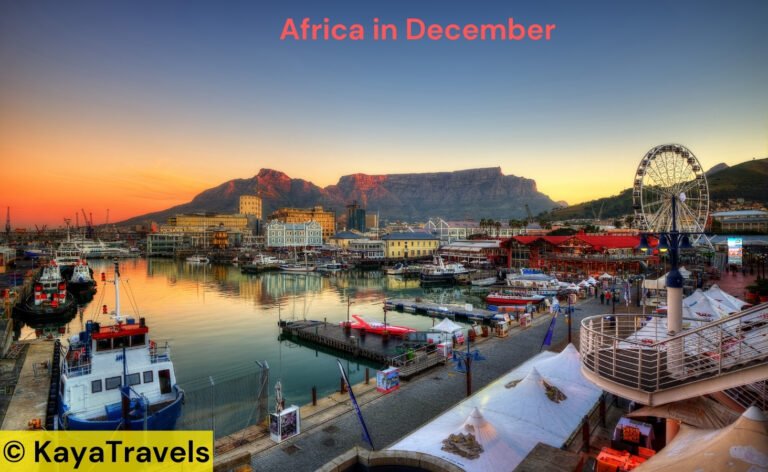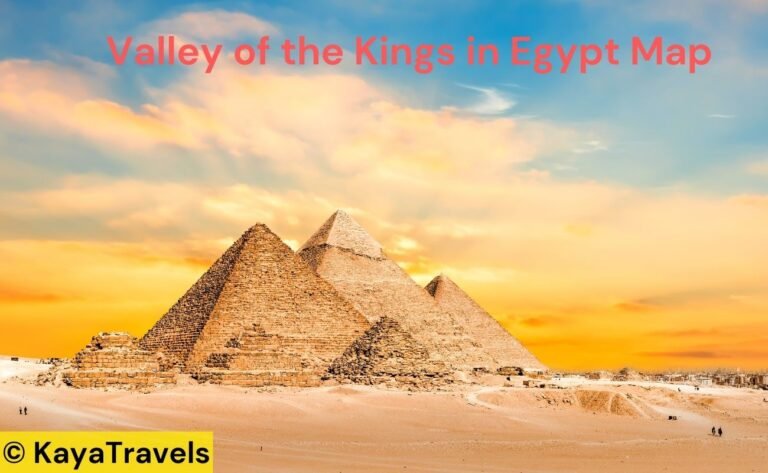Travelling to Egypt, with its ancient pyramids and the majestic Nile River, often tops the bucket list for many travellers. However, the timing of your visit can significantly impact the quality of your travel experience.
Known for its extreme desert climate, Egypt can present some challenging weather conditions that could deter even the most enthusiastic explorers.
Common wisdom suggests avoiding Egypt’s peak summer months, particularly from June to August. During this period, temperatures can soar to sweltering highs, making sightseeing an arduous task.
Activities like exploring the intricately carved tombs and grand temples become daunting under the relentless sun, which beats down on the sandy expanses.
If your travel plans are flexible, consider scheduling your trip outside these hot months. The heat in Egypt during the summer can be intense, and it’s not unusual to experience averages above 100°F (38°C).
This can be especially oppressive in city centers like Cairo or the historical sites in Luxor, where the heat radiates from the stone monuments and the usually dry air.
For a more comfortable journey, visiting during the milder seasons will ensure you can enjoy all that Egypt has to offer without the extreme temperatures.
Climate Considerations for Travel
Before planning your trip to Egypt, considering the climate for the time of your visit is crucial. The country experiences extreme temperatures in the summer months and varying crowd sizes and prices in winter, influenced by seasonal changes.
Summer Heat and Peak Temperatures
During the summer months of June, July, and August, Egypt’s desert climate brings scorching temperatures that can be challenging to bear. Daytime temperatures often soar above 34°C (100°F), making outdoor activities and sightseeing a real test of endurance.
This is especially true around Egypt’s iconic pyramids and historical sites, where shade is scarce, and the heat can be relentless.
- Hottest months: Summer is undoubtedly the hottest time, with peak temperatures usually in July and August.
- Little rain: Expect virtually no rain and very low humidity, which can lead to dehydration if you’re not careful.
- The summer evenings offer little respite, with nighttime temperatures staying uncomfortably high.
Winter Crowd and Seasonal Pricing
The winter months of January and February represent the high season in Egypt. The weather during this period is mild, with cooler weather, making it more conducive to travel and exploring Egypt’s ancient landmarks.
However, this pleasant climate also attracts the largest crowds and results in higher prices for accommodations and tours.
- Shoulder seasons: If you prefer avoiding crowds and still enjoy pleasant weather, the months just before and after the high season, known as the shoulder seasons, might be the best fit.
- Winter months: Although the days are milder, nighttime temperatures in winter can be surprisingly cool, dipping as low as 8°C (46°F), particularly in the desert.
By planning your visit outside the blistering summer heat and the crowded high season, you’ll have a more comfortable and enjoyable Egyptian experience.
Cultural and Geographical Influences
When planning a trip to Egypt, understanding the cultural and geographical nuances helps you avoid the high season and experience the country more intimately.
Religious Festivities and Events
During Ramadan, a holy month of fasting in the Islamic calendar, the rhythm of life in Egypt, especially in Cairo and Alexandria, alters significantly.
Daytime activity slows down, and nightly festivities begin once the fast breaks. While Easter and Coptic Christmas are widely celebrated, especially in areas with a high Coptic population, these events can affect shop opening times and services available.
Coptic Easter, in particular, may lead to increased local tourism to sites like the Pyramids of Giza or the Valley of the Kings.
Coastal and Desert Regions
The geographical diversity of Egypt, stretching from the Mediterranean and Red Sea coasts to the vast expanses of the Western Desert, heavily influences travel considerations.
For example, the scorching Khamsin wind can make springtime visits to archaeological sites in Luxor and Aswan, such as Abu Simbel or the Sphinx, quite challenging.
Conversely, seeking the cooler breezes of the coast, in places like Hurghada or Sharm el Sheikh, is popular for diving and beach activities outside peak tourist seasons when prices for accommodation and flights may be lower.
Coastal spots also offer breaks from the heat in the peak of summer, yet the Red Sea coast can be unbearably hot.






